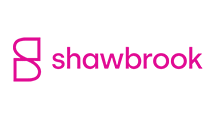Can I get a bridging loan?
Yes, most people can get a bridging loan. Lenders do not look for property investment experience and generally, bridging loans are easier to qualify for than a specialist mortgage. If you intend to pay back a bridging loan monthly, a lender will want evidence of the income you will use.
Factors that may impact you getting a bridging loan
- Some types of poor credit
- Not having enough money for a deposit
- The value of the property being less than you expected
If you have questions, chat to our advisors on live chat, via the phone, or get a call-back we're here to help.
Today's bridging loan rates
You can use our bridging loan calculator to compare today’s interest rates.
Eligibility for a bridging loan
- First time buyers to experienced landlords
- You must be over 18 years old
- Minimum deposit 20% of the property value
- Upper age limits at application are flexible
- Low personal incomes are accepted
- Property, pension and employment income is OK
Ready to get started?
Your personal advisor will call. Direct lines start 01603. Get today's rates, help, or apply. Lender terms provided in as little as two hours!
What is a bridging loan?
A bridging loan is a short-term finance solution that “bridges” a funding gap.
Bridging finance is designed to provide individuals and businesses quick access to funds. They usually have higher interest rates than a standard mortgage, as the loan carries more risk. Bridging loans are only intended to be used for a short amount of time, typically over 3-18 months, but potentially up to 24 months.
To get a bridging loan you must have a clear, workable plan to repay it. This might be from the funds you receive from selling the property, or longer-term finance (such as a mortgage). You repayment plan is called your “exit strategy”.
What does a bridging loan do? How does it work?
A bridging loan is secured against a property, either your own, or one you are purchasing with the loan. You borrow the money required for your needs for a short period of time.
The interest charged on a bridging loan is either paid monthly (this is called a “serviced” bridging loan) or paid back with the capital borrowed at the end of the term (this is called a “retained interest” bridging loan). On a like-for like basis, you can borrow more with a serviced bridging loan.
Bridging finance benefits from not having early repayment charges, meaning you have more flexibility with how and when you pay back the loan. These loans can come in a variety of formats, which we go into in further detail down the page.
Bridging loans can be used by individuals as well as companies, trusts and partnerships. This means you can take out a bridging loans through a company structure and use it for business purposes.
What can you use a bridging loan for?
Bridging loans can be for a variety of uses, including property renovation, purchase and ground-up development finance. Bridging finance can also be taken out to cover any cash shortfall you may experience or to cover temporary gaps in business cash-flow, or to buy machinery or business equipment.
We work exclusively with landlords and aspiring landlords to find the best un-regulated solutions from our range of lenders.
Some examples of uses:
Properties you cannot mortgage
Mortgages usually require your property to meet minimum standards around health and safety and human habitation.
Properties that do not have a working kitchen and bathroom, or are suffering from structural issues would fall outside these. If the property you are intending to purchase requires significant development, you could use a bridging loan to purchase it and get the work needed done to then qualify for a mortgage.
Auction property purchases
If you are buying a property at auction, you may need access to funds quicker than you are able to secure a mortgage.
You could use bridging finance to complete the purchase of the property with the auctioneer (who commonly ask for payment to be settled within 28 days of the auction), and then mortgage the property without time constraints.
Bridge to let loans
This is a specific type of loan, which allows you to finance the purchase of a buy to let or commercial mortgage property, and then has a mortgage product lined up at the end of the bridging term.
Renovations to a property
If you wish to renovate your property with the intention of increasing the value, you could use a bridging loan to complete renovations and then remortgage with its increased value or sell the property.
Property development
Property developers use bridging loans for renovation projects, where they are doing up a property rather than taking on a complete ground-up build.
We work with a wide range of bridging loan lenders, including:
Why choose Commercial Trust?

Apply with ease by phone
It couldn't be easier to secure a bridging loan with our expert advisors. Ask all your questions and arrange an application on the phone from your sofa.
World class customer service
We'll find you a great deal and take all the admin work off your shoulders, so you can relax while we get your loan completed. All the while giving you progress updates.
Lender decision in 2 hours
By contacting you by phone and email you can get help more quickly than in-person services. It's possible to get you a lender decision in principle in as little as two hours after our call.
We can help you with...
- First or second charge bridging loans
- Bridging loans for buying at auction
- Bridging loans to flip property or refinance
- Development finance for ground-up builds
- Funding refurbishment of uninhabitable property
- Buying below market value property
- Borrowing up to 75% loan to value
- Bridging loan terms from 1 to 24 months
- Investing in personal name or Limited Liability Partnership
- Investing via a limited company or Special Purpose Vehicle
- Serviced interest (paid monthly)
- Retained interest (paid at term end)
- Exiting the loan to buy to let, commercial mortgage or sale
- No minimum personal income options
- Flexible affordability calculations
- Unlimited portfolio sizes

"Bridging loans offer great flexibility, this client got their funds in just 5 working days"
When a client comes to us with an urgent case, we always pull out all the stops to help. Our knowledge of lender service levels means we know who is best placed to hit a tight deadline.
Find out moreCosts involved in a bridging loan
Lenders may charge you for the valuation conducted on your property. They often also charge a product fee, sometimes this can be added to the loan.
You will need a conveyancing solicitor who will charge fees. Read our guide to choosing a conveyancing solicitor.
We charge a broker fee for our work. You pay in two parts. A booking fee, once we have found you a mortgage deal, at application. The majority of our fee is paid at completion of the loan.
Bridging loans either come with monthly payments, this is called a serviced bridging loan, or you pay all interest at the end of the term, this is a retained bridging loan.
How to apply for a bridging loan
1
Tell our advisors about the property you are investing in, your needs and circumstances. If you have credit concerns, chat to us about them, so we can put you with the right lender.
2
Your advisor will find the best possible deal from a search of thousands of products. They will get you a lender decision in principle, this requires a soft credit search (occasionally it is a hard credit search).
3
Your advisor will call to discuss the product they have found for you. You will be presented with one bridging loan, that is the best match for all your needs and offers you the most cost effective option.
4
On your instruction, your advisor will submit your bridging loan application. Your account manager then does all liaison and administrative work to complete the deal, whilst keeping you updated at every step.
What our clients say about us
Frequently asked questions
How much you will be eligible to borrow will depend on the value of the property as well as your financial situation. Bridging lenders typically allow you to borrow up to 75% of the property value.
If you are refurbishing your property you may be able to borrow up to 85% LTV of the current value of the property, providing that this does not exceed 75% of the end value of the property.
If you own other property, which has equity in it, you could remortgage to raise capital from it to meet the LTV requirement of a bridging loan, or take out a second charge on the property without touching any existing borrowing to raise capital from it.
Extending any borrowing you already have to borrow more, via another product, carries risk. You must have a robust plan (or "exit strategy") to repay it. Bridging loans can be used pay for works to increase the value of the property by improving it.
This has to be done with care, because the works have to increase the property value by enough to repay the borrowing, when you either take out long-term finance or sell the property.
The minimum deposit for a bridging loan is typically 25% of the property value.
However, if your available cash leaves you short of this amount, you may be able to raise additional funds by extending your borrowing against other property you own (e.g. your residential home, a buy to let property, a commercial property).
A specialist mortgage broker will be able to investigate all these options with you.
There are two types of bridging finance, serviced interest, where you pay back interest monthly or retained interest, where the interest is calculated at the start of the loan but paid back at the end of the term.
You can take out a bridging loan for a term of between 1 and 24 months. You will need an exit strategy for paying off the loan. This might be to sell the property, or remortgage to a buy to let mortgage or commercial mortgage.
Bridging loans can also be regulated or unregulated.
Regulated bridging loans are used where you want to live in the property. The Financial Conduct Authority regulates this type of bridging loan. This regulation is used to protect the borrower, as it is assumed that as a domestic consumer you may not be familiar with how bridging loans work.
Unregulated bridging loans are for buying property to do up and sell (flipping property), for property that will be let to tenants who will live in it, or for property that a business will occupy.
Unregulated bridging loans are not overseen by the Financial Conduct Authority, because it is assumed that those using them will be familiar with how bridging loans work.
An exit strategy is how you plan to pay back the loan.
This strategy will need to be agreed on, in advance, with the lender for your application. You can exit a bridging loan by remortgaging, through the sale of shares, through inheritance or selling a property.
Many unregulated bridging loans have no early repayment charges. If your situation changes and you are able to repay your loan early, you might pay a percentage of the original loan and or an administrative fee to close it.
Bridging loan rates tend to be variable, but may be fixed. If you take out a fixed rate bridging loan, the monthly charge will be the same for every month of the term. If you take out a variable rate bridging loan, your payments may vary.
Variable rates typically track another rate, often the Bank of England base rate. If the rate it tracks change, the variable rate can change. It can go up or down, which means your payment can go up or down.
Bridging loan interest can be paid at the end of the term, or monthly.
Bridging loan interest payments can be “Serviced” or “Retained”.
A serviced bridging loan is where you pay the interest on the loan each month, and pay back the lump sum you borrowed at the end of the loan term.
A retained bridging loan is where the interest is added to the total loan amount, and this whole amount is repaid at the end of the loan term (you might also know this as a "rolled-up" bridging loan).
On a like for like basis, you are typically able to borrow more where you opt to pay interest monthly.
A specialist bridging loan broker can discuss these options for you and help you identify which type of loan is best suited to your needs.
Bridging loans are faster than mortgages, when it comes to getting the money from the lender.
This is why bridging finance is commonly used when buying property at auction. Auctioneers tend to want the purchase funds settled within 28 days of the hammer falling.
A specialist broker should be able to get you a lender decision in principle within 2 hours of speaking to them. A decision in principle is an agreement that, if all details of the deal remain the same, the lender will accept a bridging loan application from you.
The minimum term on a bridging loan is usually three months.
However, if you think you may not need to borrow for that long, you can discuss this with a broker. You may be able to take out a three-month deal, but not be charged large exit costs if you repay in full after say, one month, or it may be possible to get a one month term.
A bridge to let loan is a specific financial product that is used to buy a property you intend to let, which you may not be able to get a traditional buy to let mortgage for.
Bridge to let loans combine a mortgage and bridge product together so that when you are ready to “exit” your bridging loan, your buy to let mortgage is ready and waiting. This is sometimes referred to as a bridging mortgage.
Yes! Being retired shouldn’t stop you from getting bridging finance.
Age limits are amongst the criteria related to bridging loan borrowing, but a specialist broker can help you by finding a lender who is more flexible on upper age limits.
Yes! Being self-employed shouldn’t stop you from getting a bridging loan.
A lender will just need to see proof of your financial status (e.g. accounts or SA302’s).
There are lenders who offer bridging loans to those who have poor credit.
There are likely to be restrictions around how recent your credit issues were, how many instances of credit there were, how big the sums of money involved were and whether or not any outstanding debt has been repaid.
If you have raised a dispute with a lender about an amount falsely recorded as unpaid, then it may be useful to get this resolved whilst you progress a new lending application.
It is very easy to over or under-estimate the impact of credit issues, so speaking to a specialist broker will help you understand if you can get the borrowing you want.








